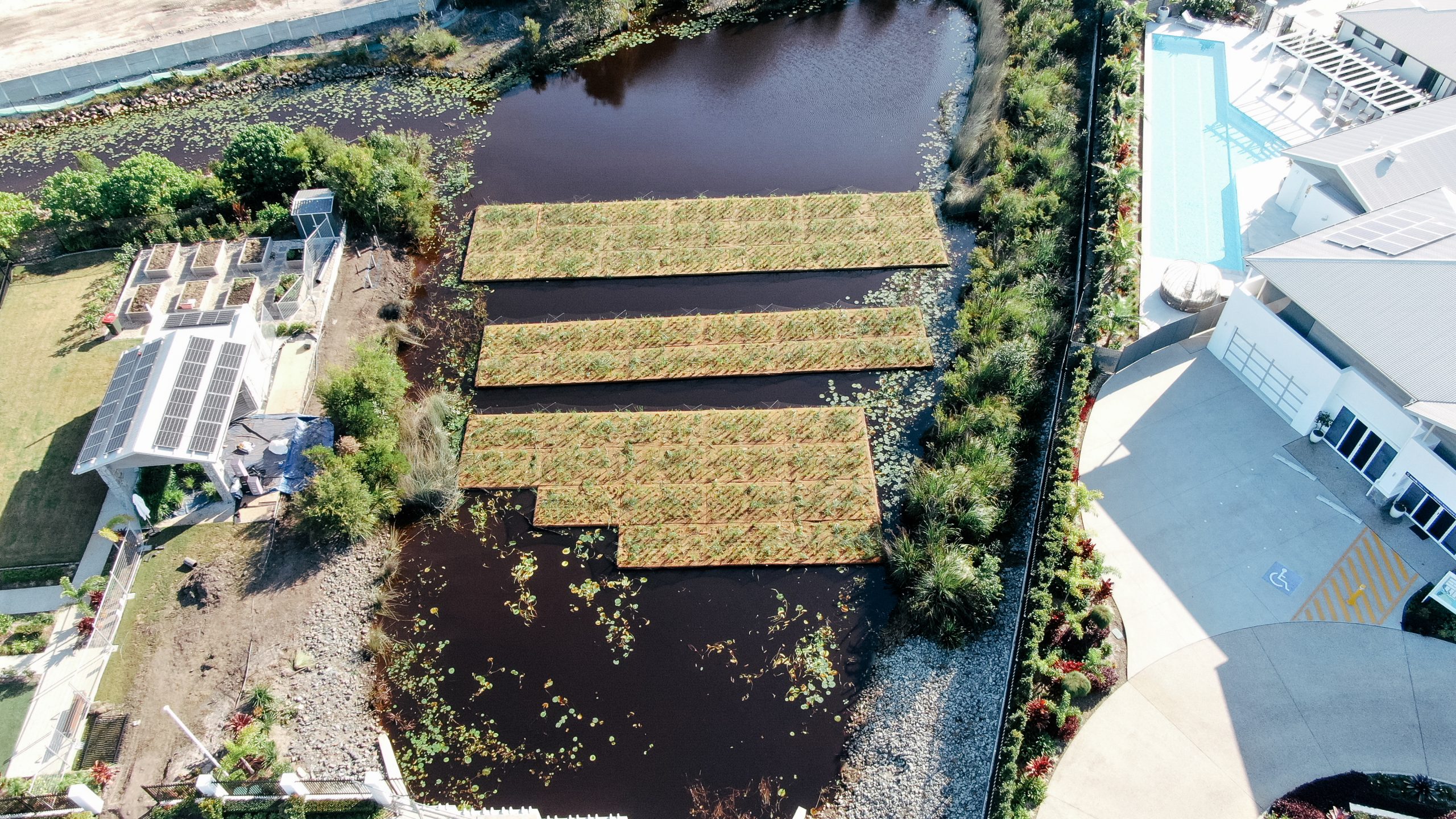Our increasingly urbanised environment puts many of our lakes, bays, and rivers in a precarious position. Left untreated, stormwater runoff from our cities can cause irreparable damage to the health of these water bodies. To protect their local waters from pollution, many communities around the world are experimenting with floating wetlands as a solution.
But what are floating wetlands and why should we incorporate them into our stormwater infrastructure?
Taking a page from Nature’s playbook
Floating treatment wetlands are artificial islands that mimic how natural wetlands and marshes work. As water flows through these ecosystems, the plants that grow there filter excess nutrients and sediments from the water. In effect, they cleanse the water of contaminants before it continues on its way to a nearby lake or bay.

However, wetlands and marshlands take a long time to develop. They are also less likely to be found in urban areas as they’re usually filled in for development. But there needs to be a way to reconcile urbanisation with water quality protection. Enter floating wetlands.

Drawing inspiration from natural ecosystems, floating wetlands harness the ability of plants to absorb nutrients and bind them into their structure. The artificial platforms serve as plant beds, letting roots extend through the water column. The roots trap excess nutrients that could otherwise cause harmful algal blooms. As they grow longer, the roots also decrease turbulence in the water flow, allowing suspended sediments to settle.
The Win-Win Scenario with Floating Wetlands
Apart from capturing water contaminants, floating wetlands also provide additional habitat for a variety of wildlife. The floating plant beds attract birds, insects, and fish. Like natural wetlands, they can also capture carbon dioxide from the atmosphere as the embedded plants mature.
These qualities, as well as their cost-effectiveness over mechanical water treatment solutions, make them attractive to councils. They are also much easier to retrofit and maintain. Looking at both ecological benefits and bottom-line gains, floating wetlands offer a win-win solution for enhancing water quality.
A very graceful launch of our floating wetlands in NSW
SPEL was contracted to install a floating wetland in Northern NSW. The local community and council were keen to improve the water quality in an open channel that fed into a nearby lake. Even though the channel served as a drainage system for surrounding development, the community wanted the waterway to also serve as a healthy habitat for aquatic and bird life.



